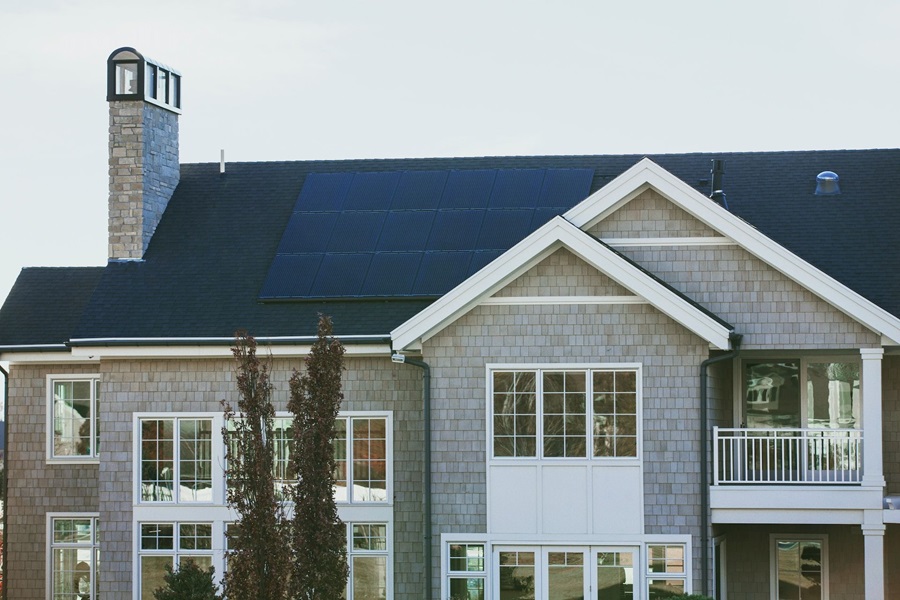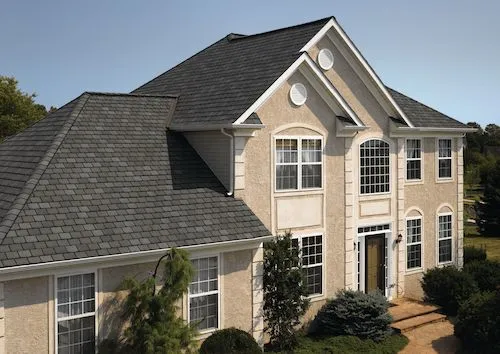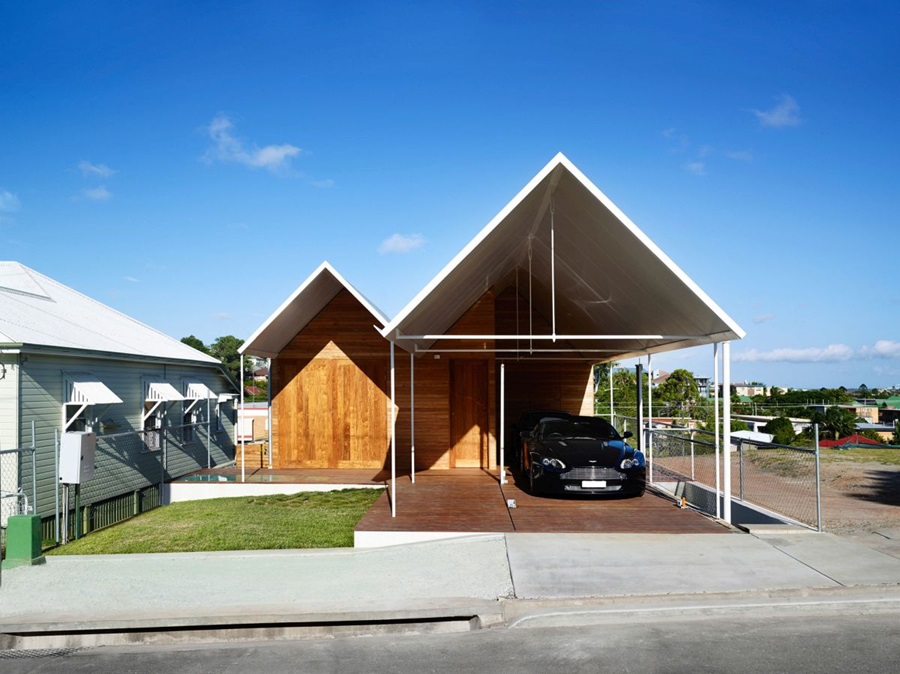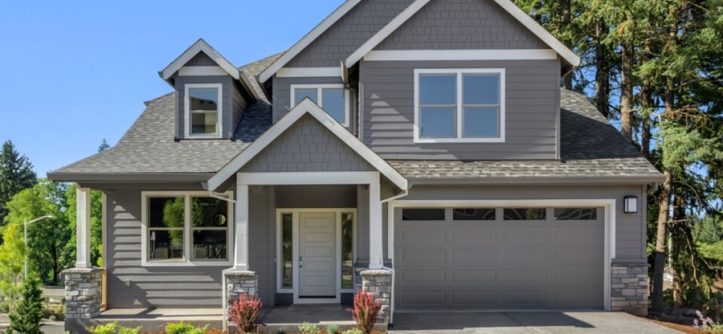Gable roof design innovations on the horizon include the incorporation of sustainable materials, energy-efficient features, and modern aesthetic elements. These advancements aim to enhance the functionality, durability, and overall appeal of gable roofs.
Additionally, technology integration, such as solar panels and smart home systems, is being explored to optimize energy utilization and improve comfort. As architects and designers continue to push boundaries, expect to see exciting advancements that revolutionize gable roof design and offer homeowners more options for customization and sustainability.
Introduction To Gable Roof Design
The future of gable roof design is full of exciting innovations. From sustainable materials to advanced insulation techniques, homeowners can expect improved energy efficiency and enhanced durability. With these advancements, gable roofs will continue to be a popular choice for residential properties.

What Is A Gable Roof?
A gable roof is a popular and classic roof design that features two sloping sides that meet at the top to form a triangular shape. This triangular shape, known as the gable, creates a distinctive and visually appealing feature.
Components Of A Gable Roof
A gable roof is made up of several key components:
- Ridge: The highest point of the roof where the two sloping sides meet.
- Eaves: The edges of the roof that overhang the exterior walls of the home, providing protection and shade.
- Gable: The A-shaped side wall of the home that forms the peak of the roof.
- Rake: The part of the roof that extends beyond the gable end.
Each of these components plays a crucial role in the overall design and functionality of a gable roof.
Unique Features Of Gable Roofs
Gable roofs have several unique features that set them apart:
- Visual Appeal: The clean lines and symmetrical shape of a gable roof make it a visually pleasing choice for many homeowners.
- Ventilation: The triangular shape of a gable roof allows for efficient airflow, which helps in maintaining a comfortable temperature inside the home.
- Water Drainage: Gable roofs have a steep slope, which allows water to easily drain off during rain or snowfall, reducing the risk of water damage.
- Flexibility in Design: Gable roofs can be easily customized to fit different architectural styles, making them a versatile choice for a variety of homes.
These unique features contribute to the popularity of gable roofs and make them a practical and aesthetically appealing choice for homeowners.
Advantages And Disadvantages Of Gable Roof Design
The gable roof design offers several advantages such as increased attic space, better ventilation, and easy snow and water runoff. However, it also has disadvantages like being more prone to wind damage and potentially higher construction costs compared to other roof designs.

Stay ahead of the game by exploring upcoming innovations in gable roof design.
Advantages Of Gable Roof Design
Gable roof design offers several advantages that make it a popular choice among homeowners. These advantages include:
- Affordability: Gable roofs are relatively cost-effective to construct compared to more complex roof designs. Their simple triangular shape requires fewer materials and labor, making them a budget-friendly option.
- Effective Water Drainage: The steep pitch of a gable roof allows rainwater and snow to easily slide off, reducing the risk of water damage and leaks. This makes gable roofs ideal for areas with heavy rainfall or snowfall.
- Maximized Attic Space: The triangular shape of a gable roof creates a spacious attic area. Homeowners can utilize this space for storage or even convert it into additional living space.
- Excellent Ventilation: Gable roofs can be designed to include vents or dormers along the ridge. These ventilation options promote air circulation, keeping the attic cooler and preventing moisture buildup.
Disadvantages Of Gable Roof Design
While gable roofs have numerous advantages, there are a few disadvantages to consider as well:
- Susceptibility to Wind Damage: Gable roofs can be more vulnerable to wind uplift, especially in areas prone to strong winds or hurricanes. The flat sides of the roof can create uplift forces, potentially causing the roof to peel away or sustain damage.
- Potential for Collapsing: Gable roofs rely heavily on proper framing and support. If not constructed with sturdy supports, the roof may be at risk of collapsing, especially under heavy snow loads or during severe weather conditions.
- Limited Design Flexibility: The basic triangular shape of gable roofs does not offer as much design flexibility compared to other roof styles. For homeowners seeking unique architectural features or complex roof designs, gable roofs may not be the best choice.
- Increased Heat Gain: The steep slope of gable roofs can result in increased heat gain during the summer months, as the sun’s rays directly hit the roof surface. This may require additional insulation or cooling measures to maintain comfortable indoor temperatures.
Innovations In Gable Roof Design
Modern Gable Roof Designs
As modern architecture continues to push boundaries, designers are reinventing the traditional gable roof with contemporary twists. Today, homeowners have a wide range of modern gable roof designs to choose from. From minimalist gable roofs with clean lines and sleek finishes to asymmetrical gable roofs that create a bold and unique look, there are options to suit every style and preference. These modern gable roof designs not only enhance the visual appeal of a home but also provide a fresh take on classic roofing concepts.
Utilizing Gable Roofs For Additional Space
Gable roofs are not only aesthetically pleasing but also offer practical advantages. One of the latest innovations in gable roof design is the utilization of the roof space for additional living or storage areas. By incorporating dormers, skylights, or attic conversions, homeowners can maximize the potential of their gable roofs. These additions provide extra space for bedrooms, home offices, playrooms, or even cozy nooks, adding value and functionality to the home. With ingenious use of gable roofs, homeowners can optimize their living space without compromising on style.

Exploring New Materials And Technologies
With advancements in materials and technologies, gable roof design has also seen a transformation. Roofing materials such as solar tiles and green roofs are now being integrated into gable roofs, allowing homeowners to harness the power of renewable energy and create environmentally-friendly homes. Additionally, innovations in insulation and ventilation systems are enhancing the energy efficiency and comfort of gable roofs. By combining the classic design of the gable roof with cutting-edge materials and technologies, homeowners can enjoy a roof that is not only beautiful but also sustainable and efficient.
In conclusion, innovations in gable roof design are revolutionizing the way roofs are constructed and utilized. Modern gable roof designs offer a fresh take on a timeless style, while clever use of space creates additional living areas within gable roofs. The integration of new materials and technologies is making gable roofs more sustainable and energy-efficient. With these exciting advancements, the future of gable roof design looks brighter than ever.
Frequently Asked Questions Of Gable Roof Design Innovations: What’s On The Horizon?
What Components Make Up A Roof Structure On A Gable Style Roof?
A gable style roof structure consists of the following components: ridge, eaves, gable, and rake. The ridge is the peak of the roof, while the eaves are the lower edges that overhang the walls. The gable is the A-shaped side wall that forms the peak, and the rake is the part that ends over a gable end.
What Makes A Gable Roof Unique?
A gable roof is unique because it has at least one flat end called a “gable. ” This triangular end is made of siding, stone, or other materials used on the home’s exterior. Gable roofs are most common in cold climates and can have one or more gables.
What Is The Architectural Design Of A Gable Roof?
A gable roof is an architectural design with two slopes in the shape of an “A” or triangle. This type of roof has been used since ancient times and is still very common today. It can have one or more gables and is typically found in colder climates.
What Is Gable Roof Design Disadvantages?
Gable roof design disadvantages include the potential for the roof to peel away in areas with high wind and the risk of collapsing if not built with sturdy supports.
Conclusion
Innovations in gable roof design are on the horizon, offering homeowners exciting possibilities for their homes. With a gable roof, the triangular end creates a distinctive aesthetic. These roofs are versatile and you can customize them to suit different architectural styles and climates.
From energy-efficient materials to advanced ventilation systems, there are numerous options to enhance the functionality and aesthetics of gable roofs. As technology continues to advance, we can expect even more exciting innovations in gable roof design. Embrace the possibilities and transform your home with the latest gable roof design trends.
Tags: architecture, design, gable roof, innovations, modern homes

